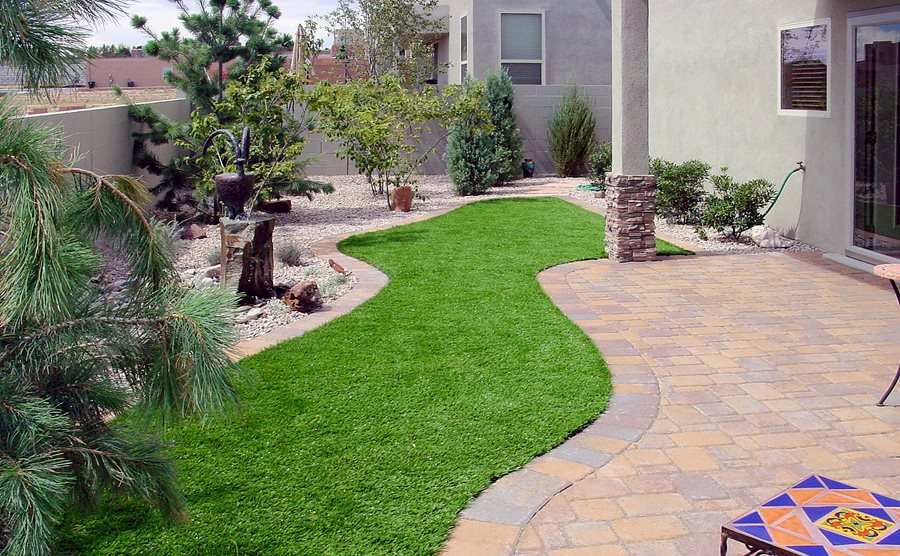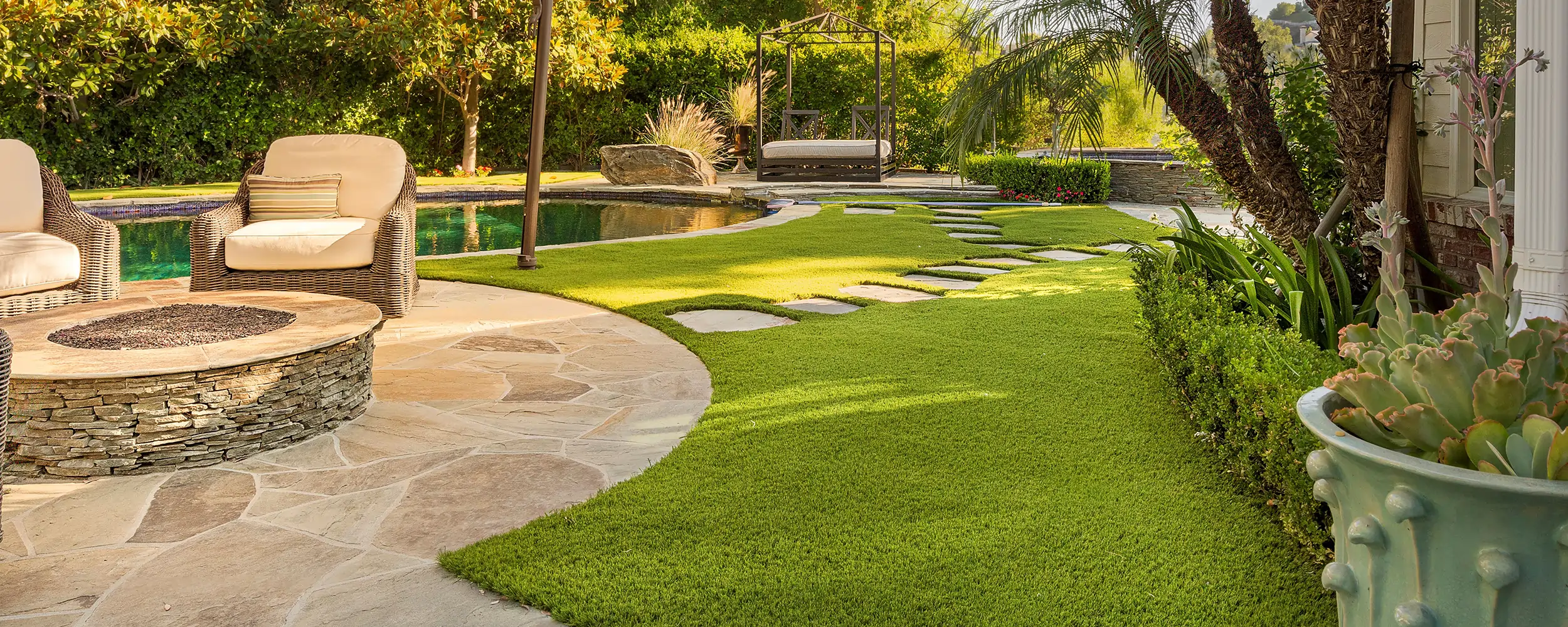Delve Into the Environmental Conveniences of Opting for Synthetic Grass Solutions
The adoption of synthetic turf services provides an engaging chance to resolve pushing environmental challenges. By considerably lowering water usage and minimizing the application of dangerous chemicals, these alternatives not just promote sustainable landscaping but additionally protect neighborhood ecosystems.
Water Preservation Advantages
One of one of the most considerable benefits of man-made grass is its capability to conserve water. Traditional turf lawns call for significant watering, particularly in areas susceptible to drought or water constraints. In comparison, fabricated turf does not require watering, dramatically reducing the general demand for water resources. This feature is specifically beneficial in deserts where water deficiency is a pushing worry.
By eliminating the need for routine watering, man-made turf adds to sustainable landscape methods and assists alleviate the environmental effect of extreme water consumption. The conservation of water extends to the decrease of drainage, which can lead to dirt disintegration and waterway pollution.
In addition, the installation of artificial grass enables home owners and municipalities to allocate water resources much more efficiently, concentrating on essential usages such as drinking water and agriculture. The change in the direction of synthetic grass not only advertises accountable water usage however likewise lines up with more comprehensive ecological objectives focused on preserving natural sources.
As areas progressively prioritize sustainability, the water preservation advantages of synthetic grass present an engaging case for its fostering in household and commercial landscaping projects.
Minimized Chemical Use
The change to synthetic grass considerably lowers the dependence on chemical therapies generally used in all-natural turf upkeep. Conventional grass administration commonly entails the application of chemicals, plant foods, and herbicides to promote development and control bugs. These chemicals can posture dangers to human wellness, local wildlife, and the atmosphere, adding to dirt and water contamination.
In comparison, synthetic lawn eliminates the requirement for these harmful substances. By lessening the release of artificial compounds right into the environment, synthetic lawn advertises much healthier soil and water systems.
Furthermore, the lack of chemical runoff connected with synthetic grass installments assists safeguard local waterways from air pollution, sustaining marine life and preserving biodiversity. Arizona artificial turf. As areas increasingly prioritize sustainable methods, choosing synthetic grass provides a sensible remedy that aligns with environmental preservation goals. Through this shift, residential property owners can appreciate lush environment-friendly areas without compromising environmental health and wellness, leading the way for an extra lasting future
Lower Carbon Footprint

Additionally, the setup of synthetic grass can cause considerable water conservation. Natural yards call for significant quantities of water for irrigation, which not only contributes to the you could check here carbon impact connected with water extraction and treatment however likewise pressures regional water sources. In contrast, synthetic grass requires very little upkeep, needing no watering, thus significantly minimizing water usage and its associated energy costs.
Additionally, the long life of synthetic grass adds to its reduced carbon impact. With a life expectancy of as much as 15 years or even more, the demand for constant substitutes is decreased, resulting in less waste and lower power usage in manufacturing and taking care of typical grass alternatives. Overall, synthetic turf presents a sustainable alternative for eco mindful landscape design.
Environment Conservation
Environment preservation is an essential consideration in the dispute over landscaping selections, especially when contrasting artificial turf to natural yard. All-natural grass lawns typically require extensive upkeep, including making use of herbicides, fertilizers, and pesticides, which can adversely influence neighborhood ecological communities. These chemicals can leach right into the soil and rivers, harming indigenous flora and fauna and disrupting regional environments.
Fabricated turf removes the requirement for unsafe chemicals, consequently protecting neighboring wildlife and maintaining the honesty of surrounding ecological communities. The setup of fabricated grass more tips here can lead to the conversion of previous grass areas into even more biodiverse landscapes, such as pollinator gardens or indigenous plant areas, which can sustain local wildlife.
Inevitably, the shift to artificial grass not just preserves water and reduces upkeep initiatives however also promotes a more harmonious partnership in between human tasks and the natural surroundings, promoting habitat conservation in the procedure.
Long-Term Sustainability
Long-term sustainability is a vital aspect in reviewing the advantages of synthetic grass over traditional grass yards. Among one of the most substantial advantages of synthetic grass is its sturdiness; it can last as much as 15-20 years with very little upkeep, whereas all-natural lawn needs regular reseeding and replacement. This longevity minimizes the need for constant sources, such as water, fertilizers, and chemicals, which are crucial for preserving a healthy turf yard.
Furthermore, artificial lawn contributes to a decrease in carbon discharges connected with grass care tools. Conventional lawns often need gas-powered mowers, trimmers, and blowers, all of which add to air pollution. Artificial turf companies phoenix. On the other hand, fabricated lawn removes the demand for such devices, advertising a cleaner atmosphere
In addition, the production of fabricated turf significantly uses recycled materials, enhancing its sustainability account. As manufacturers adopt environment-friendly practices, the ecological impact of synthetic grass continues to decrease.

Final Thought
The adoption of fabricated turf solutions offers considerable ecological advantages, including substantial water preservation, decreased dependence on hazardous chemicals, and a lower carbon impact. Fabricated turf help in preserving all-natural environments by reducing land disturbance and advertising lasting sustainability through the use of sturdy products. Jointly, these factors underscore the possibility of artificial lawn to add positively to environmental health and wellness and use a practical alternative to conventional landscape design techniques in an increasingly resource-conscious globe.
In contrast, artificial lawn does not require watering, dramatically lowering the total need try this for water sources. By lessening the launch of artificial compounds into the environment, synthetic lawn advertises much healthier dirt and water systems.
Moreover, the setup of artificial grass can result in substantial water preservation. In contrast, fabricated turf needs marginal upkeep, requiring no watering, thus significantly decreasing water use and its linked energy costs.
